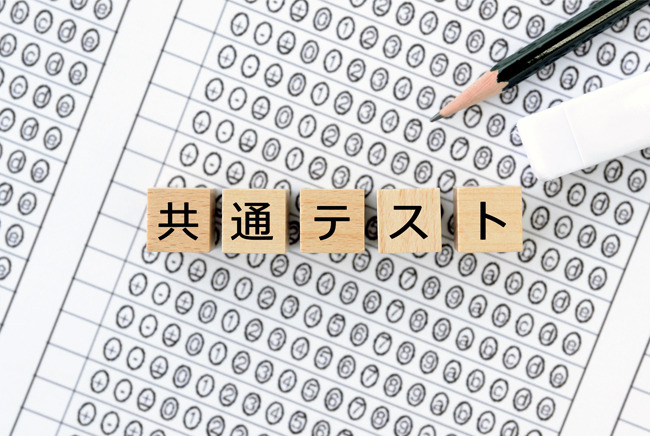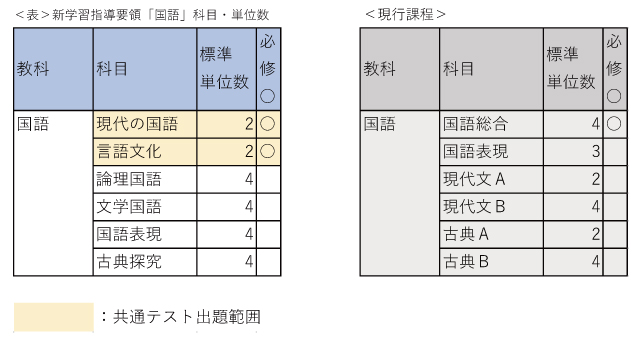Students who will be in their first year of high school next spring in 2022 will be studying in a new curriculum that is different from the current one.The students will take the university entrance exam in 1 (Reiwa 2025).At each high school, we will organize a curriculum based on the new course of study, keeping in mind the subjects and subjects that are expected to be asked in the university entrance examination four years from now.There are many high schools that have already published the curriculum table on their website for new first graders, but the "national language" that has been attracting attention along with "information" has both "literary national language" and "logical national language". You can see the high school.What kind of entrance examination range will the university set in response to the situation of such a high school?

The range of questions for the Common Test for University Admissions is "modern national language" and "language culture".

In the new course of study, the national language is composed of <table>.The required courses are "modern national language" and "language culture", and each high school decides which other courses to set up.In March of this year, the National Center for University Entrance Examinations announced that the scope of questions for the Common Test for University Admissions (hereinafter referred to as the Common Test) is "modern national language" and "language culture."
When organizing an educational course, considering university entrance exams, there are many national and public universities and private difficult universities that require ancient and Chinese writing in the common test, so most high schools are in the "classical exploration" in the <table>. Will be installed.Although the number of universities that do not cover ancient and Chinese writing is increasing, it is still a necessary subject.The next issue is which subject to set up, "logical national language", "literary national language", or "national language expression".Some may think that it would be better to set up all the subjects that are likely to be necessary for the exam, but since the number of credits (class hours) is fixed for the entire curriculum and there are other subjects / subjects, it is natural to have a Japanese language class. The number of hours is limited.Therefore, at the beginning, it was thought that it was standard to select and set one of "logical national language", "literary national language", and "national language expression".
However, looking at the curriculum of each high school that is currently open to the public, many high schools are planning to set up both "logical language" and "literary language".In addition, at the preparatory school, "Language Culture" with 2 standard credits will be set up by increasing the number of credits to 3 or 4 credits, and "Logical Japanese" and "Literary Japanese" with 4 standard credits will be 3 or 2 respectively. In some cases, the unit is reduced and installed.Previously, it was suspected that most high schools would have a "logical language" and no "literary language".Some have been worried that the opportunity to study literature in high school will be diminished, so this can be seen as a manifestation of the emphasis on the value of literary works as teaching materials.
<Reference>
National Center for University Entrance Examinations "Regarding the subjects / subjects from the Common Test for University Admissions in Reiwa 30 corresponding to the 3 Notification High School Curriculum Guidelines (March 3, 24rd year of Reiwa)"
https://www.dnc.ac.jp/kyotsu/shiken_jouhou/r7ikou.html
Ministry of Education, Culture, Sports, Science and Technology "29/30/31 revised course of study (text, commentary)"
https://www.mext.go.jp/a_menu/shotou/new-cs/1384661.htm
→The description problem in the pretest was a question closer to "logical national language"
- 1
- 2
